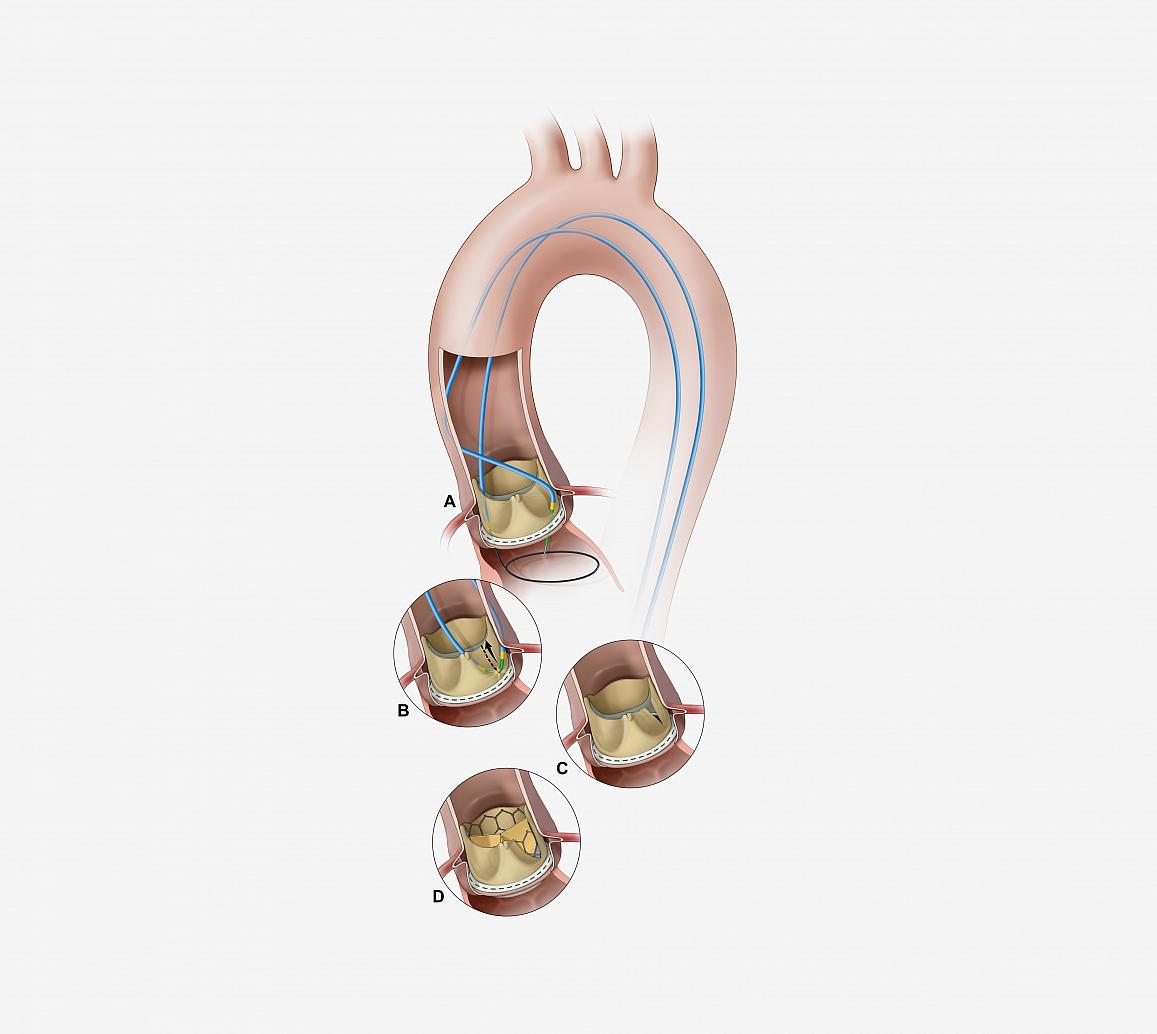New technique makes heart valve replacement safer
April 04, 2018 | Wednesday | News
For elderly or frail patients, TAVR offers an effective and less invasive alternative to open heart surgery
Scientists at National Institutes of Health have developed a novel technique that prevents coronary artery obstruction during transcatheter aortic valve replacement (TAVR), a rare but often fatal complication. The method, called Bioprosthetic Aortic Scallop Intentional Laceration to prevent Iatrogenic Coronary Artery obstruction (BASILICA), will increase treatment options for high-risk patients who need heart valve procedures.
TAVR, a procedure used to treat aortic valve stenosis, involves threading a long, thin, flexible tube, called a catheter, through the femoral artery in the leg to the heart. Aortic valve stenosis is a fatal narrowing of the valve controlling blood leaving the heart to the rest of the body. This narrowing reduces blood flow to vital organs, resulting in shortness of breath, chest pain, blackouts, and heart failure.
For elderly or frail patients, TAVR offers an effective and less invasive alternative to open heart surgery. However, a small subset of these patients may develop coronary artery obstruction during the TAVR procedure. For more than half the patients who experience coronary artery obstruction during the TAVR, this complication has been fatal.
BASILICA was developed by Jaffar M. Khan, M.D., at the National, Heart, Lung, and Blood Institute (NHLBI), part of NIH, to increase the safety of TAVR for this subset of patients.
Robert J. Lederman, M.D., the senior investigator in NHLBI’s Division of Intramural Research who led the study with Khan said, “These patients are either not eligible for conventional TAVR, or they are at high risk for it.”
Lederman explained that during TAVR, the surgeon places a catheter inside the heart and uses a balloon to open a new valve inside the aortic valve. However, in some patients whose hearts have uncommon structures, such as unusually large valve leaflets or small aortic roots, the large leaflets block the flow of blood to the coronary arteries as the new valve’s scaffolding opens.
“There is no good treatment or prevention strategy for TAVR-induced coronary obstruction,” said Lederman.
“The previous technique of using a stent to open the coronary artery appears to have poor long-term outcomes”, he added.
BASILICA offers a solution to the problem of coronary obstruction during TAVR. The interventional cardiologist weaves an electrified wire the size of a sewing thread through a catheter and uses it to split the original leaflet in two so that it cannot block the coronary artery once it has been pushed aside by the transcatheter heart valve.
In the current study, the researchers report the success of the BASILICA procedure in seven gravely ill patients who qualified for compassionate use of the technique — then untested in humans — because no other care options were available.
“All patients had a successful TAVR with no coronary obstruction, stroke or any major complication. They were doing well as they reached the 30-day-mark after the procedure”, Lederman added.










